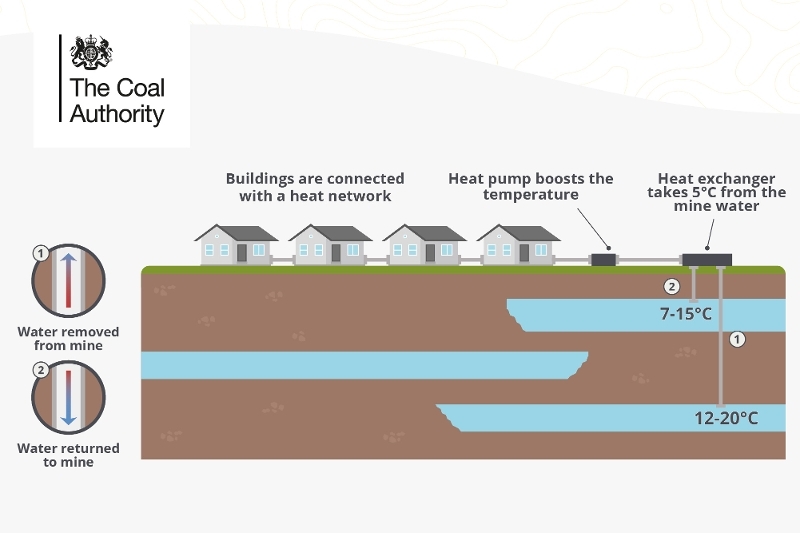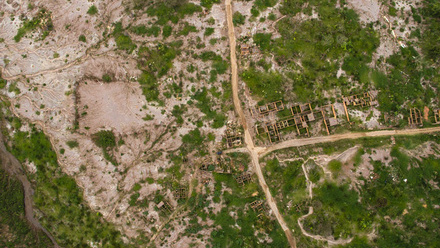BGS and Coal Authority reveal heat stored in Britain’s coal mines
The British Geological Survey (BGS) and Coal Authority have released maps which for the first time, reveal the extent to which heat is stored in Britain’s disused coal mines.

Infograophic showing a heat network and how heat is drawn from mine water energy
© Coal AuthorityAccording to the Coal Authority, one quarter of the UK’s population live above abandoned coal mines. The mines are warmed by natural geothermal processes and, following the closure of the majority of the British underground coal mines during the 1980s-1990s, the requirement to dewater ceased leaving many to become flooded, the waters are now being developed as a source of low carbon energy to heat homes and businesses.
To build on this potential, BGS and the Coal Authority have released an interactive map showing where the mines are and the extent by which temperatures increase with depth. The new mapping tool is freely available to use by developers, planners and researchers to identify opportunities to investigate the use of mine water as a sustainable heat source. The maps can be viewed online.
BGS geoscientist, Gareth Farr, who led the project finds the results exciting, ‘It’s the first time we have been able to visualise the temperature of Britain’s coalfields. We have found records of heat temperatures going back over 100 years and compared them to temperatures in the mines now, and found them to be quite similar. This is a clear indication that geothermal processes that create this heat will be here for a long time to come.
‘Combined with other layers of data, the maps provide an important groundwork for developers, local authorities and scientists to explore new mine water heating schemes, and we are hopeful they will be of value to inform policy decision making’.
Heat recovery and storage in Britain’s coal mines is still in its infancy and many challenges need to be addressed including the ownership of heat, identification of flooded workings, development of regulatory and licensing frameworks and costs.
A bespoke geo-observatory is being constructed in Glasgow as part of the UK Geoenergy Observatories (UKGEOS) programme to address scientific questions associated with sustainable use of abandoned mines for low enthalpy heat recovery and storage.
The UK government has a target to increase the number of homes on heat networks from 2% to 18% by 2050. It is recognised that geothermal energy from mines, combined with heat pump technology, could provide a sustainable energy source for these networks that is both local and low cost.
The Coal Authority’s Head of Innovation, Jeremy Crooks, notes, ‘We are currently reviewing over thirty potential heat network opportunities using geothermal mine energy. Seaham Garden Village and Gateshead are the first two such schemes to secure funding from the government’s £320 million Heat Network Investment Programme, with others to follow.
‘It’s ironic that mining coal, a fossil fuel, would provide access to a low carbon, clean air, energy source that will last far longer than the 200 years of intensive mining that created this opportunity’.
The maps highlight areas where warm water has been abstracted by pumping, creating opportunities to harvest heat without drilling into the workings. The research behind the maps is published in an open access paper by the Quarterly Journal of Engineering.








